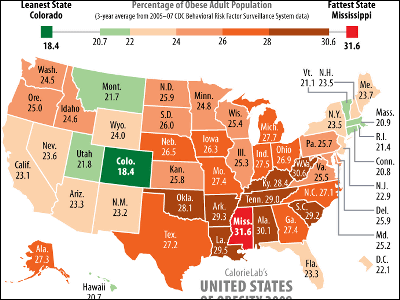Google publishes reports at a glance that shows `` how much unnecessary urgent outings are being held down '' at various places in the world, you can also check data of each prefecture in Japan

In countries and regions where the new coronavirus infection (COVID-19) is endemic, there is a growing movement to avoid unnecessary and urgent outings. A detailed report that shows how large such a movement has actually reached, Google shows `` how many people at retail stores, supermarkets, parks, stations, workplaces, homes around the world have increased or decreased '' Published.
COVID-19 Community Mobility Reports
The data released by Google is based on the information of the account that has ' Location History ' turned on in Google's smartphone application. There are hundreds of millions of users around the world who use Google Maps and so on, so even if only some of them have turned on Location History, the amount of data obtained is huge. In addition, based on Google's privacy policy , information collected for personal identification such as personal location, contact information, movement history, etc. is kept confidential, and location history is saved from `` activity management '' in Google account settings. You can also turn it off.
At the time of the outbreak of COVID-19, Google collected collected location information data in 'retail stores and recreational facilities', 'supermarkets and pharmacies', 'parks', 'public transportation facilities such as railway stations and bus stops', 'workplaces', ' Housing 'into six categories. We have released survey data on how users at each location have increased or decreased.
Google publishes data from around the world and you can browse it freely. This time, to check the data of Japan, click 'Download PDF' of Japan section.
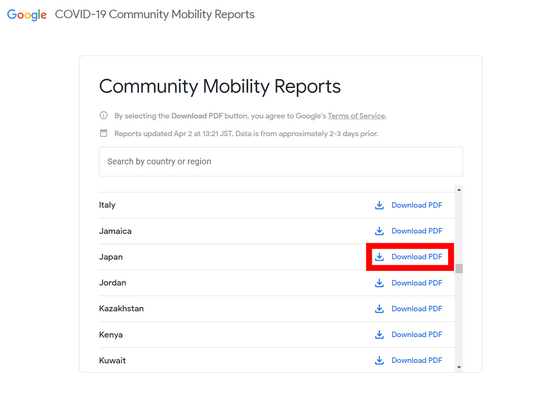
At the time of writing the article, clicking on it displayed Japan data as of March 29, 2020.
2020-03-29_JP_Mobility_Report_en.pdf
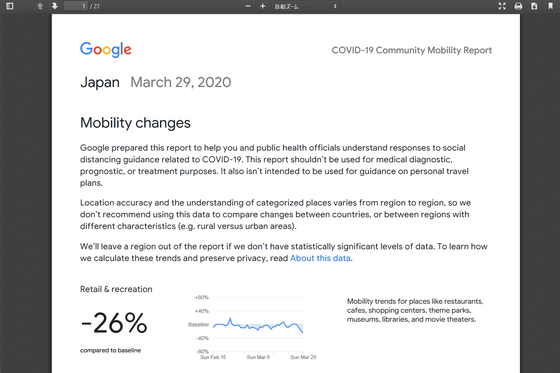
The data for Japan as of March 29, 2020 looks like this. In Japan, 'Retail & recreation' decreased 26%, 'Grocery & pharmacy' (supermarkets and pharmacies) decreased 7%, 'Parks' decreased 25%, 'Transit stations' decreased 41%, 'Workplaces' decreased 9%, and 'Residential' increased 7%. Each of these figures is based on the median of the period from January 3, 2020 to February 6, 2020 as a reference value, and indicates 'how much has changed from the reference value as of March 29, 2020?' It represents. “People in the place” is calculated from “number of visitors” and “length of stay”. Next to the numbers are also graphs showing how each data has increased or decreased over time.

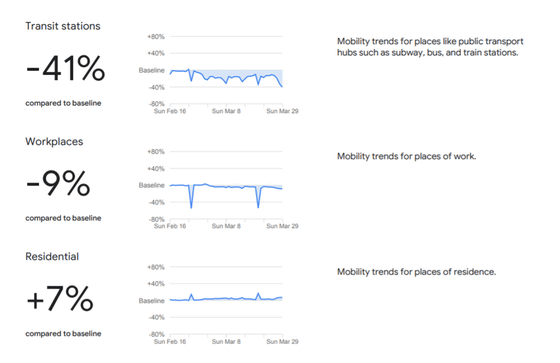
In addition to the big round 'Japan', data on each prefecture was also released. The data for Tokyo are as follows. In Tokyo, 'Retail and recreation facilities' are down 63%, 'Supermarkets and pharmacies' are down 32%, 'Parks' are down 66%, and 'Public transport facilities' are 59% Decreased, 'workplace' decreased by 27%, and 'house' increased by 14%. It can be clearly seen that the spread of COVID-19 has caused Tokyo residents to avoid unnecessary and urgent outings.

In Kanagawa Prefecture, those who are in 'retail and recreation facilities' decreased 55%, 'supermarkets and pharmacies' decreased 31%, 'parks' decreased 66%, 'public transportation facilities' decreased 55%, 'Work' was down 23% and 'house' was up 13%. Among the Japanese prefectures, Kanto prefectures such as Chiba, Gunma, and Ibaraki prefectures all have the impression that they can 'refrain from unnecessary and urgent outings.'
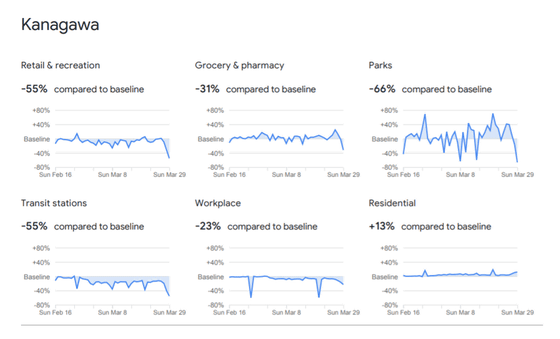
On the other hand, in Kyoto, it looks like this. 'Retail stores and recreational facilities' decreased by 10%, 'Supermarkets and pharmacies' increased by 7%, 'Parks' increased by 12%, 'Public transport facilities' decreased by 32%, and 'Workplace' decreased by 3%. The percentage of “Housing” decreased by 4% and that of “Housing” increased by 4%.
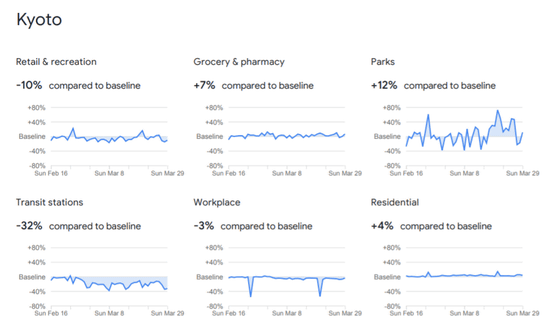
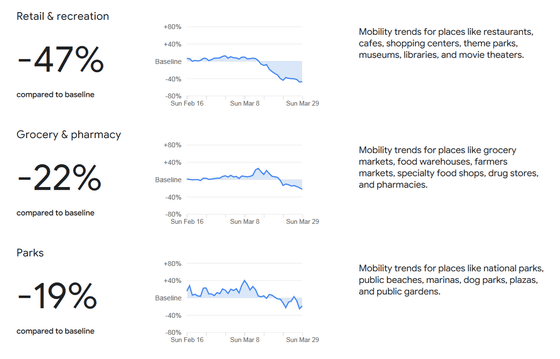

Related Posts:
in Web Service, Posted by darkhorse_log




